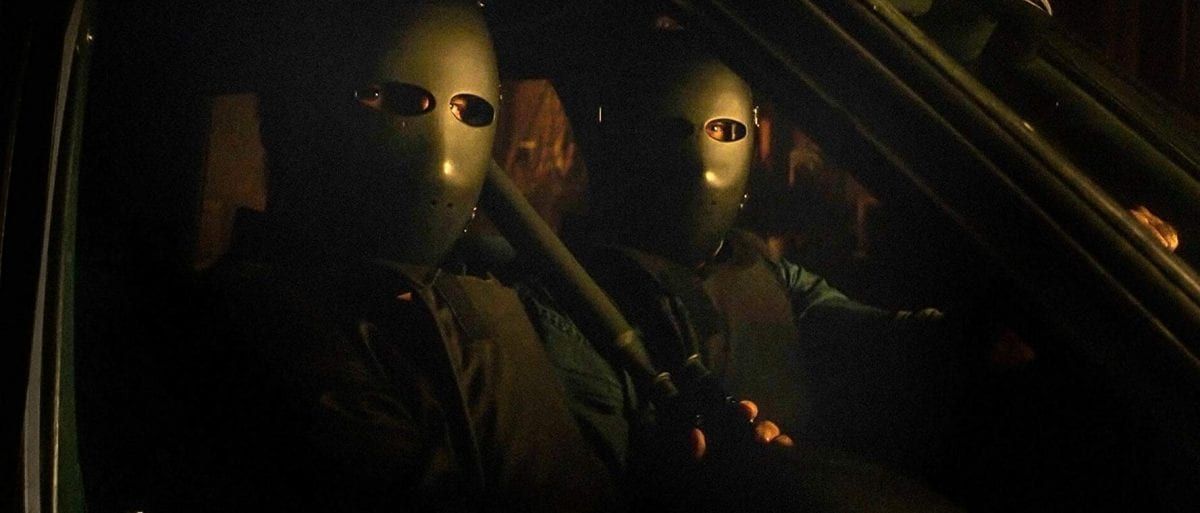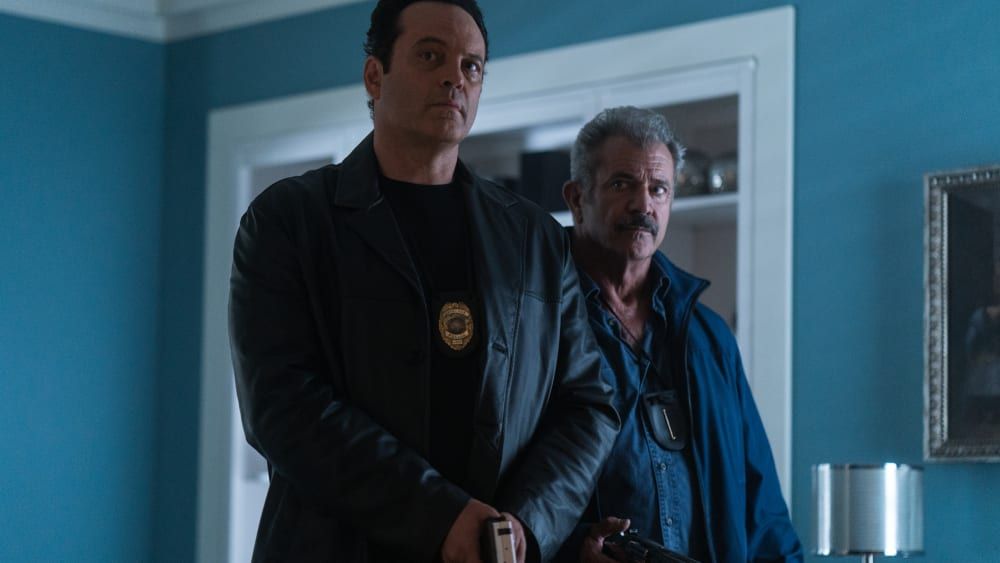With his first two films, writer/director S. Craig Zahler established a distinctive voice. Working in exploitation cinema but unbound by the genre’s usual brief running times, he has stretched out his narratives, using the extra running time to dive more deeply into his characters than is typical in exploitation and to play with the genre. In Bone

Cops Ridgeman (Mel Gibson) and Lurasetti (Vince Vaughn) are suspended from duty for excessive force, but Ridgeman needs money to move his wife (Laurie Holden) and daughter out of a bad
Where Zahler is all but unique in exploitation cinema is in the way he takes time to set up his characters both minor and major, so many characters here feel like they have a life outside the film. Ridgeman and Lurasetti are pretty similar to each
The people Zahler is least interested in here are the bad guys. Most of them have neither faces nor names (Black Gloves, Grey Gloves). They speak the same terse, stylised and highly entertaining dialogue as the rest of the characters, but they are essentially bodies for Ridgeman and Lurasetti to face off with.
As Ridgeman, a grizzled, ‘tache wearing, Mel Gibson is better than he’s been in years, decades even. He clearly sees that this is a juicy part; a chance at the kind of career relaunch he’s been waiting for in front of the camera but, while he grabs it with both hands, he’s careful to underplay the role. Ridgeman is a dinosaur and a corrupt cop, but Gibson plays him not as some kind of crazy or reactionary figure but, as the dialogue says, as a man who doesn’t change with the times. There’s a measured approach to the performance – exemplified in the many dialogues about the percentages of situations – that shows you how Ridgeman would have been an effective cop for 30 plus years. If Vince Vaughn, while he’s excellent, isn’t as revelatory here, that’s for two reasons; first he’s ceding much of the spotlight to Gibson (which is entirely appropriate for the characters) but

For the most part, Gibson and Vaughn are adept at making us root for these characters despite ourselves. The only time that changes is in a couple of moments, addressed almost directly to
For about an hour, Zahler sets his pieces and develops his characters, but it’s in the film’s second half that everything kicks off, drawing the characters together and escalating both tension and violence. Again, the time taken is striking; where another film would have a car chase, Zahler has several long sequences of Ridgeman and Lurasetti following behind the people they are tracing, for a long time completely in the dark about what they are walking in to. The action does occasionally delve into the staggeringly graphic violence for which Zahler is known, notably in a sequence in which a swallowed key has to be recovered, but what’s really notable about how he treats violence here is the impact of a single bullet; we’re used to characters who can say ‘it’s only a flesh wound’ and shrug off injury, here we see the sheer damage that a bullet can do, impacts are felt viscerally.
I don’t think Zahler intends Dragged Across Concrete as some sort of state of the nation

